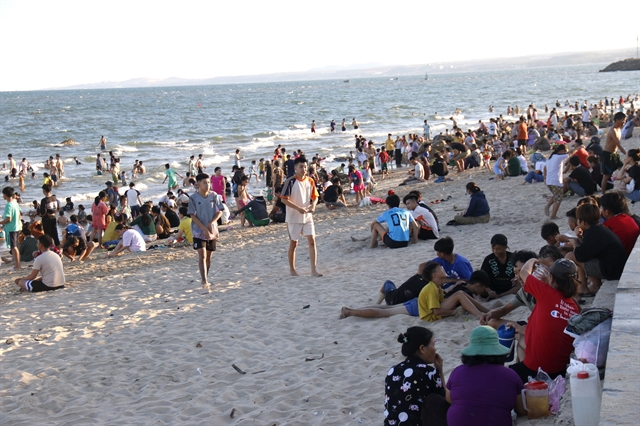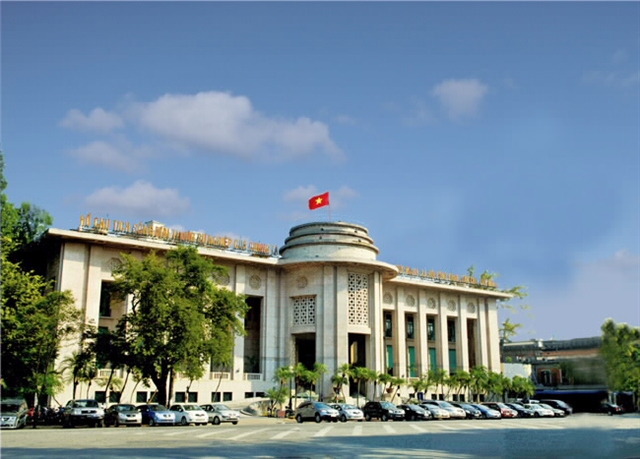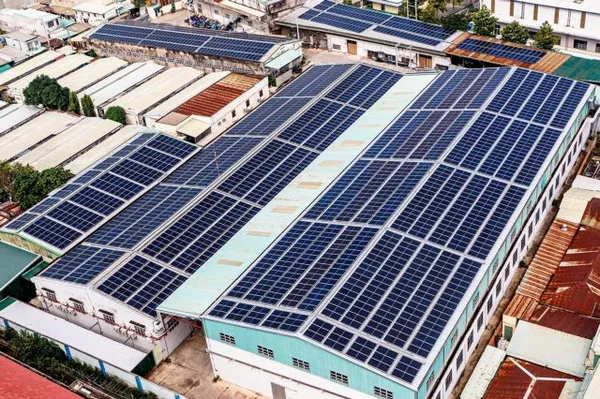 Economy
Economy

 |
| The State Bank of Việt Nam's headquarters in Hà Nội, Việt Nam. — VNA/VNS Photo |
HÀ NỘI — The average lending interest rate for new loans by commercial banks is reported at around 6.4 per cent per year, a decrease of 0.7 percentage point per year compared to the end of last year. However, borrowers with loans issued before the latest rate adjustment still must pay higher rates, according to the State Bank of Việt Nam (SBV).
Đỗ Phước Tống, chairman of Duy Khánh Mechanical Company Ltd, said his company has a 7-year loan with an interest rate of 9 per cent per year. After minuscule decreases, the rate was only adjusted to 8.5 per cent per year.
While new loans have been issued at significantly lower rates, older loans, even for priority sectors such as mechanical engineering, must still bear high interest rates, especially during a period of economic difficulties.
He said banks also required his company to produce additional collateral or have their credit limit reduced as banks have been showing concern over the declined value of the properties.
"For the past two years, business has been tough, revenue has decreased significantly. Our profit is barely enough to cover the interest," he said.
Nguyễn Quốc Anh, director of the Đức Minh Rubber Company Ltd. and chairman of the HCM City Rubber Plastic Manufacturer Association, said his company is still paying back numerous loans with interest rates as high as 8.5 per cent per year for short term and 11.2 per cent per year for long term.
When confronted by borrowers, the banks said rate cuts for older loans would take a delay to implement but when asked how long the delay would be, none could provide a timeline.
"For businesses, long-term loans are for long-term investments. It will be difficult for them to produce a profit at higher interest rates," he said.
"Right now, the most pressing issue for businesses is a lack of orders from customers. While they must wait for demand to bounce back, the banks must support businesses to help them survive with rate cuts," he said.
Tô Thị Tường Lan, secretary-general of the Việt Nam Association of Seafood Exporters and Producers, said in 2022, the lending interest rate in US dollar was only about 2 per cent per year, then gradually increased to 4 per cent per year, and now has risen to 5.5-6 per cent per year. Meanwhile, exchange rates have been fluctuating significantly, causing disadvantages for companies borrowing in foreign currencies.
Explaining why the interest rate for new loans has decreased significantly but the interest rate for old loans is still too high, a director-general of a commercial bank, said last year after the SCB incident, commercial banks rushed to increase deposit interest rates, some offered even up to 9-10 per cent per annum to attract capital. At the time, many customers chose to deposit for 24 months or 36 months, and now banks are still paying high deposit interest rates as promised.
"This means that the capital raised at this high price must somehow remain profitable until the end of 2024, even until mid-2025. Even in the second quarter of 2024, many banks still bear high-cost capital from early 2023. However, as pressure gradually decreases, banks will also gradually reduce the interest rates for long-term loans for customers," he said.
How long it will take banks to bring down their interest rates also differs significantly. Banks that aggressively pushed medium and long-term loan products at the beginning of 2023 had to significantly increase long-term deposit interest rates, and now have to pay high interest for high-cost capital. However, banks that did not focus on attracting long-term deposits at the time will have an easier time now," he said.
Deputy Governor of the SBV Đào Minh Tú said in a recent statement that capital in the country's banking system remains abundant with full liquidity, even surplus with interest rates currently at a 20-year low, a great condition for businesses to borrow.
However, some commercial banks have not been able to bring down their rates, even as the central bank demanded public disclosure of interest rates, allowing people to pick the lowest rates.
"Since the end of 2023, the SBV has been directing commercial banks to further cut costs and profit targets to bring down interest rates, for both old and new loans," said the deputy governor. — VNS









